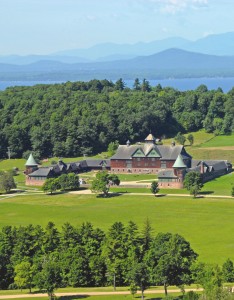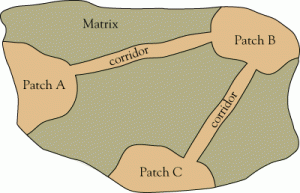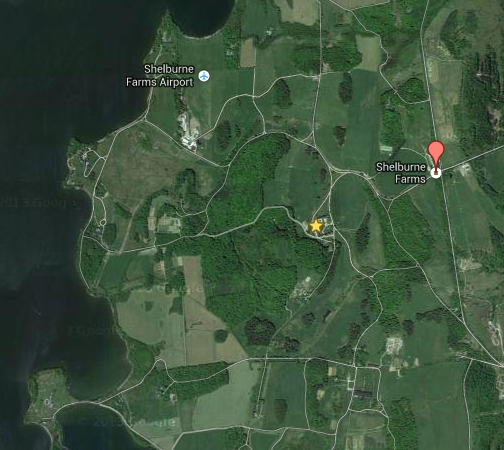Natural Resources & Assistant Woodlands Manager of Shelburne Farms in Shelburne, Vermont.
What species of wildlife are found most abundant on your property?
Squirrels, rabbits, foxes. bobcat every now and then, there are bobcats on the property, deer. *Note these are the most commonly seen on the property*
Are any species in particular considered more of a liability towards business than others?
The deer do a lot of damage and it is effecting the business. They do a lot of browsing in the woodlands. It is effecting the economics of the woodlands because we are not getting enough regeneration.
Has this been a consistent problem or has this been discovered recently?
It has been a problem that has sprung up since 2000, where a bow hunt has been started in response to observations of over browsing in the woodlands. Those who want to hunt must pass a test and a select few are chosen to bow hunt, about 16 bow hunters, this is during the hunting season, usually for three weeks in october and a week in December. Only bow hunting is allowed because we do not allow firearms on the property and we don’t want people shooting guns.
How do you guys feel about rewilding your farm, specifically in terms of rewilding with regards to faunas?
I think it’s fine, I think it more focuses on what the property can support. It is a very fragmented property with a lot of patches of woodlands, not a lot of interior habitat for some animals likings. So occasionally there would be a moose on the property and the moose is not happy, it is not where it wants to be, it needs to get on the other side of route 7 where there are bigger woodland areas. Any species that we could provide habitat for, that would thrive here, great, I am not going to force a species to try to be here if it doesn’t want to be.
Do you feel like your property isn’t adequate for animals to reside in permanently, but rather more to serve as a corridor?
I feel like it is definitely habitat for some long term residents, but we still wouldn’t choose something to introduce onto the property just because we think it is cool to have on the property. Especially when we do not have the right habitat for it. I hope that any species that wants to be here has found the place, but I would need to do more research to see if there are any that are here and that we do have the right habitat for.
What methods of Eco-design do you guys encourage on the farm, if any are used, to work in better sync with the surrounding wildlife?
We’ve been thinking/working on projects to see where we could add some corridors and we have been able to plant one corridor. I’ve had conversations with the dairy manager (Discussions usually go like this) and we said it would be awesome to connect these two patches of woods and he responded with “well thats my prime pasture, I don’t really want you to take that land”. But we showed him where we wanted another corridor and he said that is not good land anyways, so he said we could have that. You know that kind of conversation. We’ve also done some thinking about having a couple of larger patches of woodlands or expanding some to gain more interior habitat. We also have to think, if expanding them, what kind of species would it benefit by getting a little more interior habitat and is it really worth it. These are the typical conversations we have regarding eco-design.
On behalf of your farm and it’s business, do you believe that having a rewilding project, which includes incorporating more animal friendly, infrastructures on the farm will encourage more business or hurt it?
I think it would be beneficial, it would be great as long as they want to be here and we are not forcing anything. I think that it would work so long as we have a big enough property. The farm is an outdoor classroom for students and there are a lot of casual walkers, I think they would really thrive on the wildlife here. It would be great to have more wildlife. If there is little things we could do like I said, a little planting or thinking about how we could tweak the landscape to encourage species that would thrive here, I think that would be great.
Do you think Shelburne farms as a Company and a Business would encourage rewilding?
My job as natural resources manager, I brought forth a committee of individuals that worked closely with the land, that said if we did this planting here, this species would be encouraged to thrive. Salamanders for example, they are a species that is easy to carry out these projects for. If we encouraged a vernal pool in this location we are going to get really great habitat for salamander and I think they (The Farm as a Company) would ask in response for the cost. I would respond with all we have to do is put a burm right there and I can do that with a tractor and it wouldn’t really cost anything, they would be all for it. But if I told them I’ll need a fill and this and that, it would be a much more difficult decision to make. I think it depends that if it isn’t something that we are not trying to force too much and it kind of…I mean if we do need to force it, it is a bigger conversation. The bigger the deal the more money it would be to get whatever habitat we needed to make for a species then the bigger a conversation it is, but the smaller the thing, like putting some logs down for the salamanders, they would hang out underneath them. As the natural resource manager, a small project like that wouldn’t require me to talk to anyone about that, I could just do that myself.
Response to The Interview
My decision of interviewing Natural Resources Manager Dana Bishop came about because I felt Shelburne Farms, though not entirely a full production working farm in the way we would think of a working farm, had a uniqueness to it in terms of how many outsiders they had visiting their farm on a regular basis. The farm still does produce products such as dairy, cheese, maple syrup, and other commodities. Their primary form of business is tourism and educating for sustainability as their motto goes, “Cultivating a conservation ethic for a sustainable future”. I felt that getting the farms opinion on rewilding would allow me to see some of the potential social issues that may come up with rewilding on a farm that sees a lot human traffic.
Overall throughout the interview I found that rewilding is accepted on the farm, so long as they are able to financially accommodate such projects. On the farm, Dana says that as an Agricultural establishment, they understand the importance of conservation and are more than willing to do what they can to the best of their ability and can financially accommodate. Though Dana made it clear that she as the natural resources manager would never force a species onto the property, just to draw in tourists. Unfortunately the farms landscape is quite patchy due to its intense agricultural past. The farm currently does see its fair share of wildlife, deers for example have been thriving on the land, so well that a bow hunt was established in 2000 to control the population on the property.
The farm has been trying its best to rewild the property in terms of the wildlife by incorporating more connectivity between the woodlands that have established on the property, but Dana states this can sometimes be a challenge with the dairy manager who also uses the land to graze his cattle. Usually what comes as a result of this is Dana is given land that is unfavorable, in which she turns into corridors allowing safe travel for the wildlife that roams the land. Overall Dana did feel that Shelburne Farms would encourage wildlife so long as their land could support it because of the many benefits the farm’s ecosystem would obtain, but it will also allow many of those that use the farm as an education tool to become more in tuned with the wildlife as well, as more habitat would equate to a richer amount of wildlife.
All in all I felt Shelburne farms was a prime example of some of the problems that a farm faces as it welcomes the rewilding ideology. For instance not having the resources to carry rewilding out completely without sacrificing financial production. For what resources that they do have at hand, I feel Shelburne farms is doing fine in incorporating ecological design that allows them and the local wildlife to be intertwined. Regardless of the fact that they are financially and restricted in terms of size, they make little steps in welcoming the species that share the land with them.They set an example to other agricultural establishments, showing the little things that can be done without completely sacrificing production.
-John Truong




